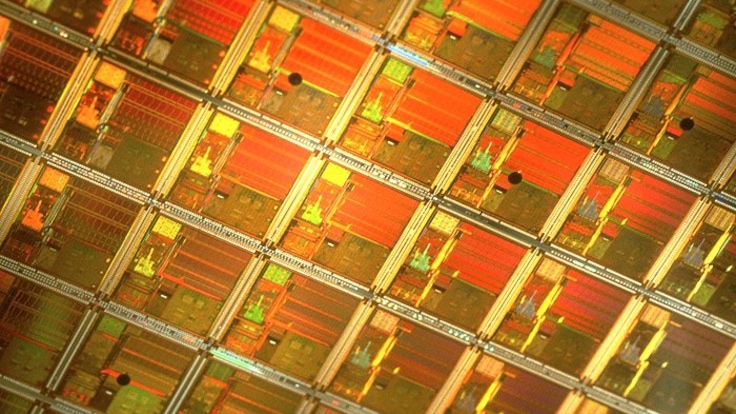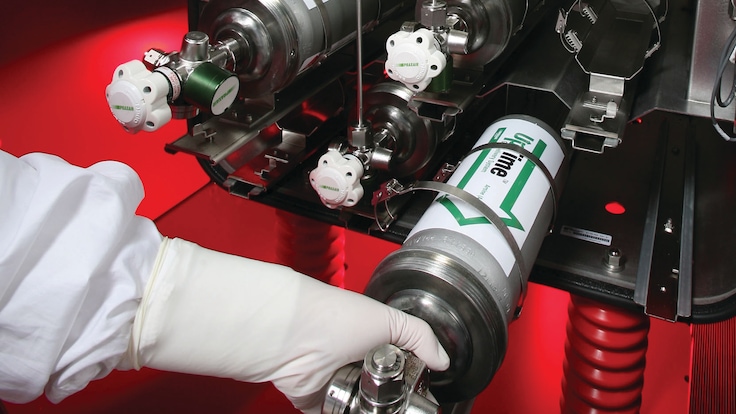
CO2: The Natural Choice for Air Conditioning
With pioneering work on dopant sources for ion-implantation in semiconductor fabs, Linde’s UpTime technology is driving cleaner mobility.

Speaking at the milestone unveiling of the first Tesla Roadster back in 2006, a rather proud Elon Musk said that aside from putting thousands of the cars on the roads, what really matters is “making a difference in the world”. And for that, Tesla needs to build many cars. “Until every car on the road is electric, we will not stop,” he famously added.
However, to build “many cars”, Tesla - or any other electric vehicle manufacturer for that matter - relies on the scalable production of Power Semiconductors; so-called “power electronics”. This is where Linde, with its pioneering innovations in the semiconductor fabrication process, is making a difference.
“Electric vehicles (EVs) use power electronic devices to control the motors and batteries,” explains Stan Smith - Director of Electronics and Digital Applications R&D at Linde. “They’re semiconductors but they’re made to operate under really high voltages and temperatures,” he adds. That is to say, these are not the same chips that go into our smart phones and computers, but their fabrication requires the same fundamental process used in all semiconductor fabs: doping.
“Every electronic device that you own has used doping of some sort - and ion-implantation is a primary method,” explains Smith. Ion-implantation is a process whereby ions of a dopant molecule - such as Boron - are accelerated into the surface of the silicon lattice in order to change its electrical conductivity. Alternatively, ion implantation can be used to modify material properties such as degree of crystallinity. However, compared to standard electronics, power devices require different dopant source materials.

“Of the critical dopant materials used today for power devices, many are solid sources such as Antimony Trifluoride (SbF3),” explains Smith, “The problem is, solids don’t operate as well as gases with the ion-implantation tool.” Getting vaporized gas from a solid source, requires a long heating process, followed by a long cooling down period before a different dopant can be run on the tool. In the end, the whole process is far from efficient. With productivity in mind, the market was demanding a gas-like source. Linde delivered.
Linde’s Electronics R&D team has pioneered the use of new dopant sources for the power electronics application. “The compounds that we’re working on like Antimony Pentafluoride (SbF5) are what we call “gas-like” sources, in that they are liquids that act like gases,” explains Smith. That means they have enough vapor pressure to supply the ion-implantation tool without heating. “These gas-like substances are much easier to handle than solids and give much higher throughput. They increase up-time of the tool,” Smith adds. Therein lies the benefit for Linde’s semiconductor fab customers.

Under Linde’s “making our world more productive” mission statement, the R&D which Smith and his team undertake is focused on developing solutions that allow customers to operate with less tool downtime, higher throughput and lower cost of ownership (COO). “It’s consistent with our UpTime story,” Smith says.
Linde’s recent pioneering work on new dopant sources that allow ion-implantation to evolve is just the most recent chapter in an on-going UpTime story. “Historically, our foray into this area started with how the gases used in semiconductor fabs were packaged and was driven by safety requirements,” Smith explains. “We developed UpTime cylinders with a novel delivery system that allows toxic gases to be delivered safely at sub-atmospheric pressure.” This alone offers a significant improvement in terms of productivity since the toxic gases don’t need to be diluted and thus the cylinders could hold much more than when using other approaches such as dilution or carbon adsorption. “The reason we call it UpTime is because the tool is “up” more often - you’re not changing cylinders as often,” Smith adds. The result: increased productivity for customers.
The second UpTime chapter was all about coming up with innovative mixtures of traditional dopant gases to put into these cylinders that could allow the tool to run for much longer without preventative maintenance. “We not only came up with mixtures that enhance the ionization of Boron, but we also reduced the halogen cycle which wreaks havoc on the tools, causing downtime and lower device yield,” says Smith. That brings us to the most recent chapter: developing gas-like materials that can be substituted for solid dopant sources.

With its recent pioneering work, Linde is enabling the ion-implantation part of a fast-growing industry - a fundamental piece of semiconductor manufacturing for power electronics. “We’re basically making these devices manufacturable at scale,” says Smith. And that matters. Why?
Because at the last count, according to the Global EV outlook 2020, there are around 7.2 million electric cars on the roads - accounting for 2.6% of global car sales and about 1% of global car stock in 2019. While the global fleet of electric vehicles has expanded significantly in the 15 years since the Tesla Roadster’s release and Musk’s famous statement, it’s not nearly at the point where Tesla can stop - nor the many other EV manufactures which have since been established. If we are to realize the common goal of making a difference in the world through cleaner mobility, innovation must continue. And on that front, Linde will not stop.